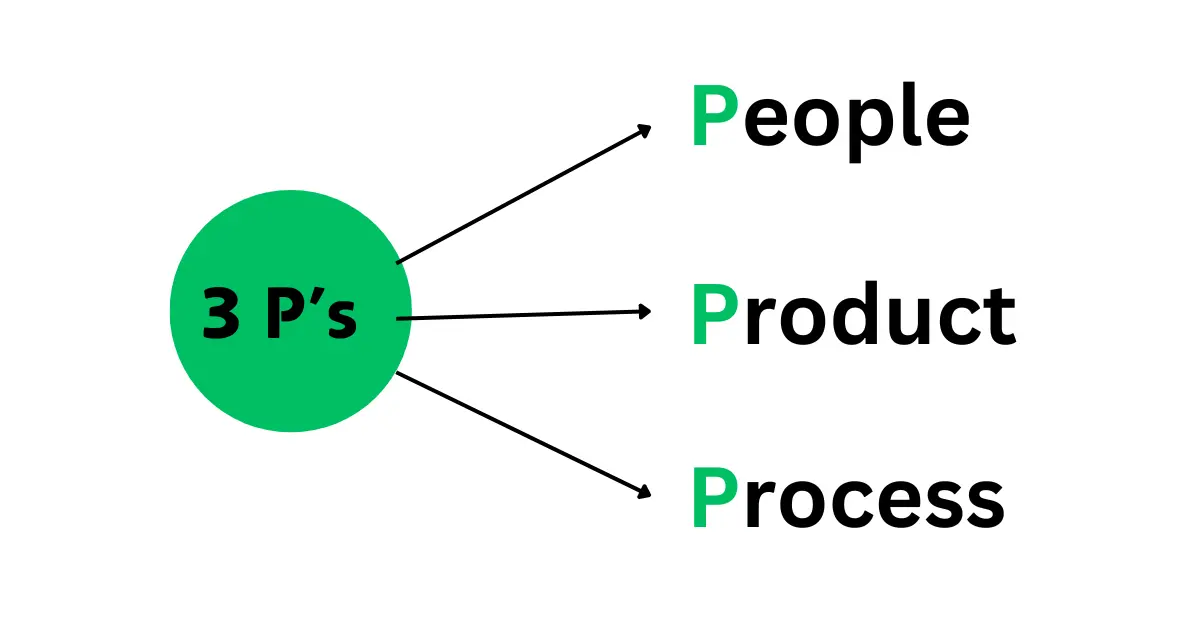B2C Commerce | What is Business to Consumer Sales & Strategies
Navigating B2C commerce can be challenging. The digital marketplace is constantly changing, making it hard for businesses to keep up and succeed.
This guide offers essential insights and practical strategies. It provides businesses with the tools they need to navigate and excel in today’s digital environment.
What is B2C Commerce Meaning?

Business-to-customer eCommerce involves transactions where businesses sell directly to individual consumers. This model is prominent in retail, where products are sold to the public.
The rise of the internet has transformed B2C. Electronic commerce has transformed the way businesses interact with consumers through digital platforms.
Nowadays, online shopping is a key aspect. It allows customers to purchase goods and services from home.
The importance of B2C lies in its wide reach. It provides businesses with the opportunity to expand their customer base beyond physical locations.
Digital presence is crucial for success. It requires mobile-friendly websites and efficient delivery services. While B2C focuses on business-to-customer transactions, other models like C2C Consumer to Consumer involve transactions between individual consumers.
Types of B2C Commerce Businesses

There are several types of B2C businesses, each with unique characteristics:
Direct Sellers
These are traditional retail businesses that sell products directly to consumers. Examples include online stores and physical retail shops.
Online Intermediaries
These businesses act as middlemen between buyers and sellers. They do not own the products but facilitate transactions. Examples include online marketplaces like eBay and Amazon.
Advertisement-Based Models
These businesses earn revenue through advertising. They provide free content or services to users and generate income from advertisers. Examples include social media platforms and news websites.
Community-Based Models
These businesses build online communities around specific interests or products. They earn revenue through memberships, advertisements, or product sales. Examples include forums and social media groups.
Fee-Based Models
These businesses charge users a subscription fee to access their content or services. Examples include streaming services like Netflix and subscription-based news websites.
Setting Up B2C Commerce
Initial Steps to Get Started
Starting a B2C business requires careful planning. Identify your target audience and products. Conduct market research to understand customer needs and preferences. Additionally, businesses operating in certain states should consider financial factors like the Capital Gains Tax in California, which may impact revenue and long-term growth strategies.
Building and Customizing Your Online Store
Create a user-friendly website. Ensure it is mobile-friendly and easy to navigate. Use appealing visuals and clear descriptions to showcase your products. Consider using e-commerce platforms like Shopify or WooCommerce.
Essential Tools and Best Practices
Utilize essential tools for managing your online store. These include inventory management systems, customer relationship management (CRM) software, and analytics tools.
Follow best practices such as providing excellent customer service, offering multiple payment options, and maintaining data security.
Benefits of B2C
- Expanding Customer Reach: B2C allows businesses to reach a global audience beyond their physical location.
- Cost Reduction: Online stores reduce overhead costs associated with maintaining physical storefronts.
- Building Detailed Customer Profiles: Businesses can collect and analyze customer data to create personalized shopping experiences.
- Convenience for Customers: Online shopping provides consumers with the convenience of purchasing products from home.
- 24/7 Availability: B2C eCommerce platforms operate around the clock, providing customers with the ability to shop anytime.
- Increased Sales Opportunities: Digital marketing strategies can target specific customer segments, increasing sales opportunities, especially for high-ticket sales.
- Enhanced Customer Engagement: Interactive online platforms and social media allow businesses to engage with customers more effectively.
- Scalability: B2C businesses can easily scale their operations to meet growing demand.
Ensuring that products arrive in perfect condition is a key part of enhancing customer experience. For example, a headphone dent upon arrival can negatively impact customer satisfaction and their future shopping choices. This highlights the importance of quality control and packaging in B2C commerce.
Digital Strategies for B2C Success
- Utilize Mobile Platforms: Ensure your website is mobile-friendly. Many consumers shop on their smartphones.
- Effective Marketing Techniques: Implement digital or channel marketing strategies like SEO, email marketing, and social media marketing to reach more customers.
- Data Protection and Privacy: Maintain strict data protection policies. Build trust by safeguarding customer information.
- Personalization: Use customer data to personalize shopping experiences. Tailored recommendations can boost sales.
- Content Marketing: Create valuable content that addresses customer needs. This can include blog posts, videos, and infographics.
- Customer Feedback: Collect and analyze customer feedback. Use it to improve products and services.
- Fast and Reliable Delivery: Ensure timely delivery of products. Offer multiple shipping options.
- Customer Support: Provide excellent customer support. Use live chat, email, and social media to address customer inquiries.
- Loyalty Programs: Implement loyalty programs to retain customers. Offer rewards and discounts for repeat purchases.
Incorporating creativity into your content marketing strategy is vital for connecting with customers. For example, using funny Instagram captions can capture your audience’s attention, increase engagement, and build brand loyalty, all of which are essential for success in B2C commerce.
Comparing B2C and B2B Commerce

Key Differences Between B2C(Business to Consumer Sales) and B2B(Business to Business Sales) Commerce
|
Aspect |
B2C Commerce |
B2B Commerce |
|
Target Audience |
Individual consumers |
Businesses or organizations |
|
Transaction Volume |
Typically lower-value, higher-volume transactions |
Higher-value, lower-volume transactions |
|
Decision-Making |
Quick, often impulse-driven |
Longer, more complex decision-making process |
|
Sales Cycle |
Short sales cycle |
Longer sales cycle |
|
Customer Relationship |
Transactional, less personalized |
Relationship-based, more personalized |
|
Payment Methods |
Credit/debit cards, digital wallets, COD |
Invoices, purchase orders, bank transfers |
|
Marketing Strategies |
Focus on emotional appeal, brand loyalty |
Focus on logic, ROI, and cost-benefit analysis |
Use Cases
|
Use Case |
B2C Example |
B2B Example |
|
Product Purchase |
Buying clothes from an online retailer |
Purchasing raw materials from a supplier |
|
Service Subscription |
Subscribing to a streaming service |
Subscribing to a business software solution |
|
Marketing |
Social media campaigns targeting individual users |
Email marketing campaigns targeting business clients |
Skills Required
|
Skill |
B2C |
B2B |
|
Marketing |
Digital marketing, social media, customer engagement |
Account-based marketing, lead generation, B2B sales |
|
Sales |
Retail sales, customer service, upselling |
B2B sales, negotiation, and relationship management |
|
Technology |
E-commerce platforms, CRM, analytics |
Enterprise software, ERP systems, supply chain management |
Monitoring and Maintenance
Tracking Analytics and Performance
Regularly monitor your B2C site’s performance. Use analytics tools to track key metrics such as traffic, conversion rates, and customer behavior. Assessing financial stability, including the Probability of Default for certain transactions or payment models, can help mitigate risks and optimize revenue streams.
Regular Updates and Security Measures
Keep your website updated with the latest features and security patches. Regular updates ensure the site runs smoothly and protects against cyber threats. Security measures like SSL certificates and secure payment gateways build customer trust.
Utilizing API Documentation for Enhancements
APIs (Application Programming Interfaces) allow for seamless integration of new features and third-party services. Utilize comprehensive API documentation to enhance your website’s functionality and provide a better user experience.
Case Studies and Real-World Examples
Successful B2C Companies

Many companies have found great success in the B2C space. Amazon and Apple are two prime examples that stand out for their innovation in business-to-consumer sales.
Real-World Example: Amazon and Apple’s Success in B2C Commerce
A recent example of B2C commerce is Amazon’s approach to online shopping, which has revolutionized the digital marketplace. Amazon allows businesses to sell directly to consumers through its platform, creating a seamless shopping experience. This model is an excellent example of business-to-consumer sales, where customers can purchase everything from books to electronics from the comfort of their own homes.
Additionally, Apple has refined the B2C commerce model by offering a personalized online shopping experience, making it easy for customers to purchase directly from their website. Through its effective use of digital marketing and customer engagement, Apple has consistently maintained strong relationships with individual consumers, ensuring they return for repeat purchases.
Lessons Learned from Industry Leaders
Industry leaders have shared valuable lessons on succeeding in B2C. Key takeaways include understanding customer needs, investing in digital marketing, and continually innovating to stay ahead of competitors.
- Understanding Customer Needs: Successful B2C companies focus on delivering products and services that meet customer expectations.
- Investing in Digital Marketing: Effective use of SEO, social media, and content marketing helps reach a wider audience.
- Continuous Innovation: Staying ahead of market trends and adopting new technologies ensures long-term success.
Conclusion
B2C commerce is essential for modern businesses. It offers vast opportunities for growth and customer engagement.
By understanding and implementing effective strategies, businesses can thrive in the digital marketplace. Understand the benefits of B2C to stay competitive. For insights on effective e-commerce strategies, visit the U.S. Small Business Administration.
FAQs
What is an example of B2C?
An example of B2C is an online retailer like Amazon selling products directly to individual consumers.
What is B2B, B2C, and C2C e-commerce?
- B2B (Business-to-Business): Transactions between businesses.
- B2C (Business-to-Consumer): Transactions between businesses and individual consumers.
- C2C (Consumer-to-Consumer): Transactions between individual consumers, often through a third-party platform.
Is Amazon a B2B or B2C?
Amazon operates as both B2B (Amazon Business) and B2C (Amazon.com), catering to both businesses and individual consumers.
What Are the 5 Types of Business-to-Consumer Models?
The five types of B2C models are:
- Direct Sellers: Businesses sell directly to consumers.
- Online Intermediaries: Platforms connecting buyers with sellers.
- Advertising-Based: Businesses generate revenue through ads.
- Community-Based: Businesses build communities around their products.
- Fee-Based: Businesses charge a subscription or membership fee.






